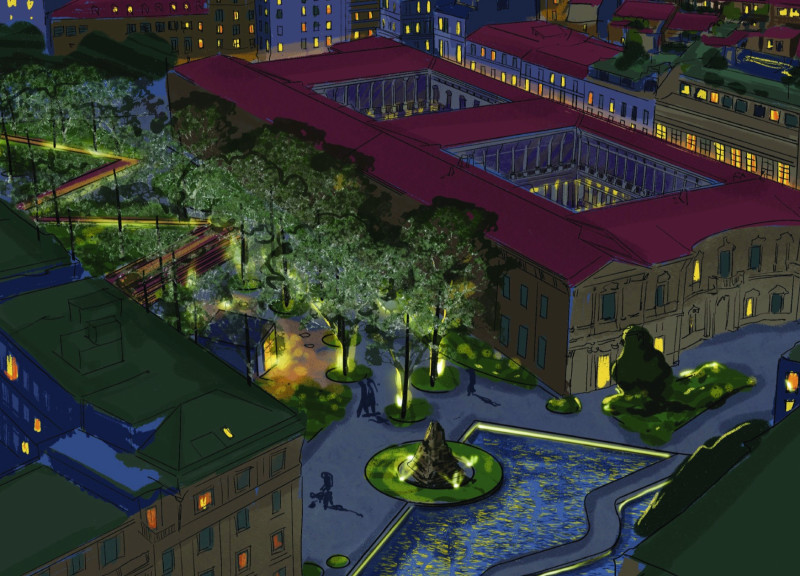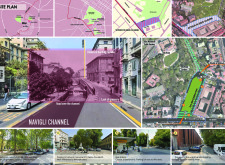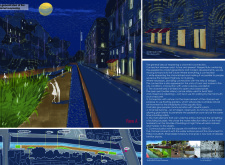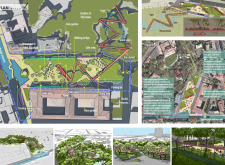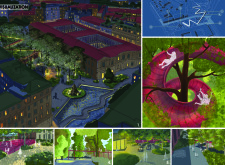5 key facts about this project
The project embodies an ecological framework that incorporates floating gardens, rain gardens, and green spaces to improve urban biodiversity. Strategic planning positions pedestrian pathways and cycling routes throughout the site, promoting accessibility. The use of historical landmarks in the vicinity is essential in contextualizing the architecture within Milan’s rich past, ensuring that the design honors and reflects the area’s heritage.
Integration of Natural Elements
A distinct feature of this design is its commitment to ecological integration. Floating gardens are a pivotal aspect, serving as habitats and public spaces that enhance the environment and provide recreational opportunities. The incorporation of rain gardens helps manage stormwater, promoting natural drainage solutions that minimize urban runoff. This sustainable approach not only beautifies the area but enhances its ecological health.
User-Centric Design
The project prioritizes the user experience through the incorporation of communal areas, such as cafes and parks, which encourage social interaction. Walking bridges and decking enable safe pedestrian movement, enhancing connectivity between waterfront activities and urban life. These features foster an inviting atmosphere that encourages community engagement while ensuring that historical narratives are woven into the urban fabric.
To fully appreciate the technical intricacies and architectural details of this project, it is encouraged to explore the architectural plans, architectural sections, and architectural designs presented. Engaging with these materials will provide deeper insights into the design's innovative approaches and its significance within Milan’s urban landscape.


